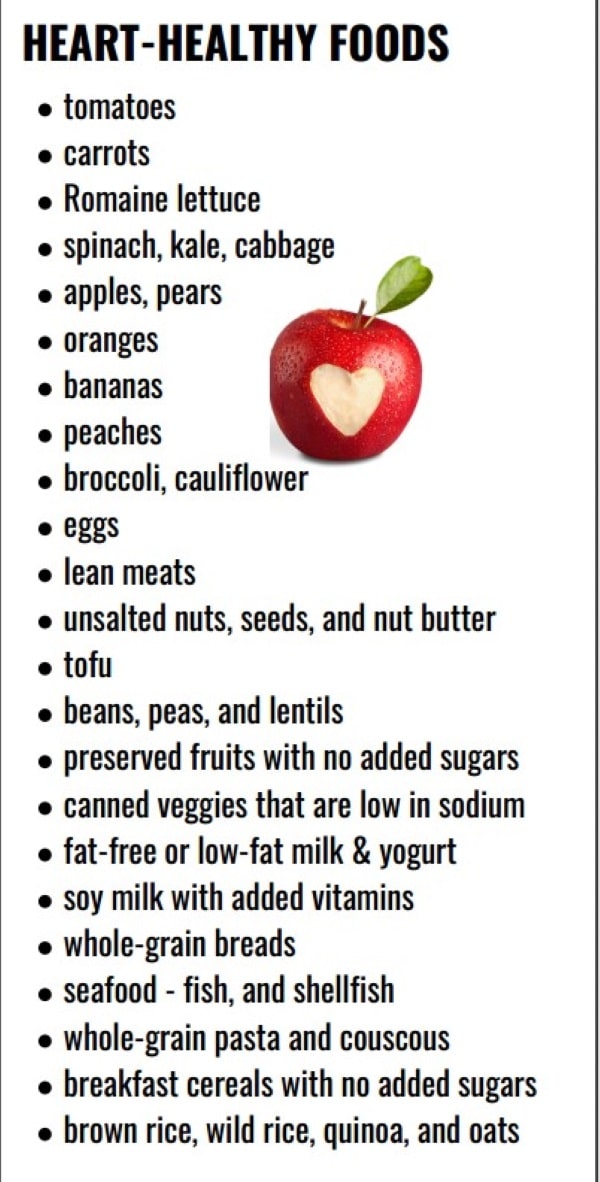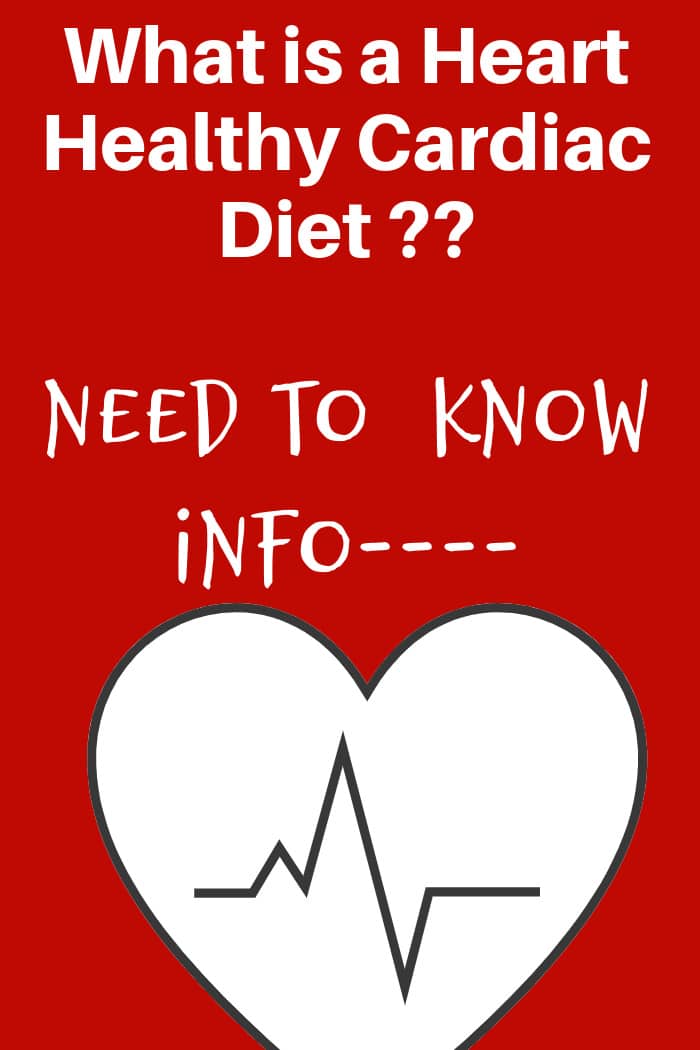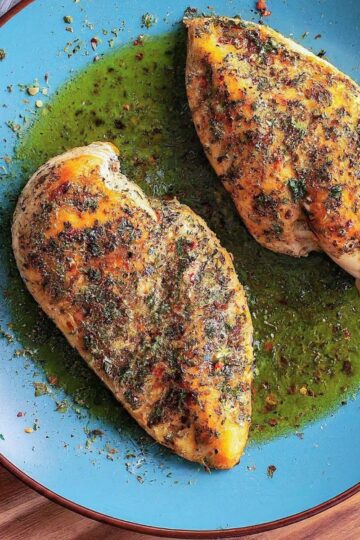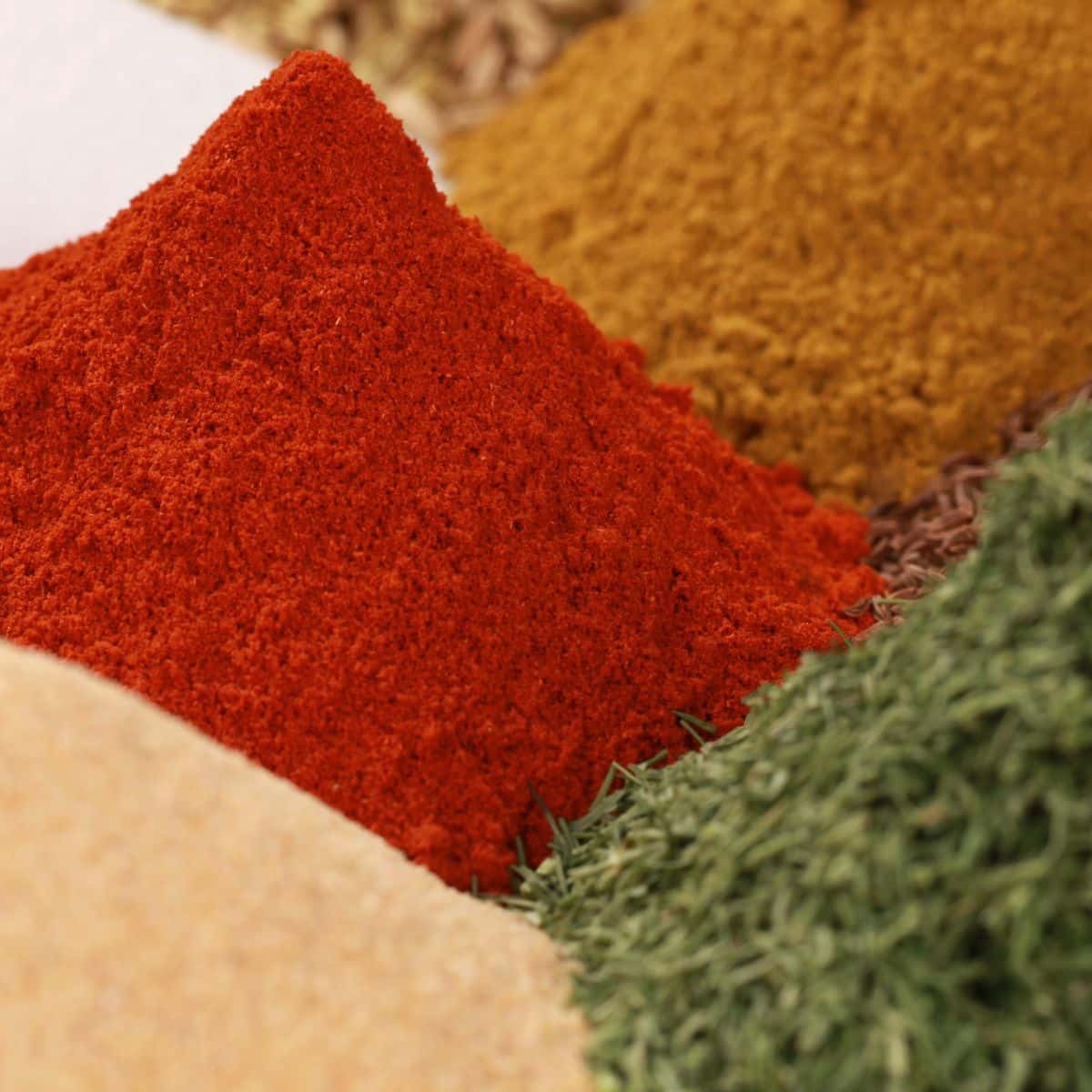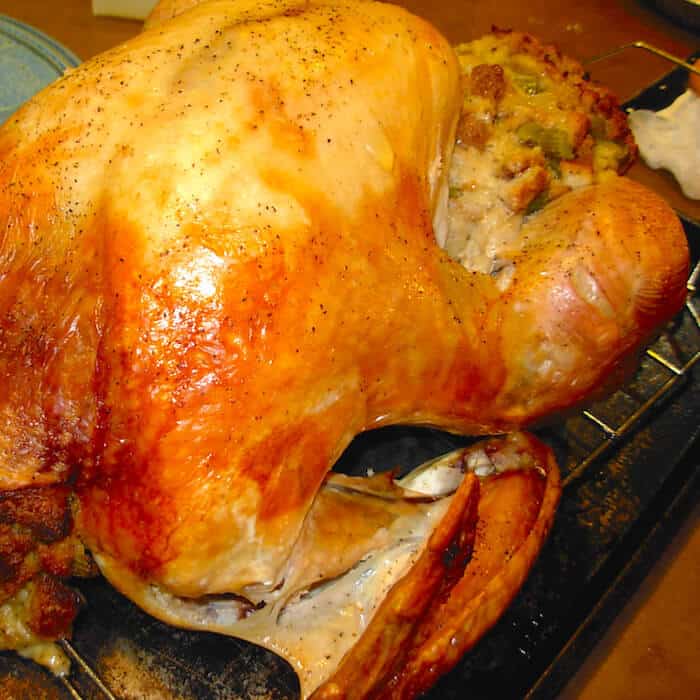A heart-healthy diet, also known as a cardiac diet, may be confusing to you. It is for many people, but don't worry; I'll help you understand what it means and how you can choose healthier eating habits for yourself and your family.
February is Heart Health Month, but any month or day is a good time to start eating healthier. The best way to improve your diet is to just take it one day at a time and one meal at a time. Otherwise, the changes may seem too overwhelming.
[ez-toc]
Take a look at how you eat now.
I don't know about you, but everything in my life starts with food. Good food is the highlight of my day! Food with flavor, depth, and creativity makes my heart happy.
I grew up eating meat, potatoes, and a vegetable for dinner nearly every day. Our meals were always meat-centered, but our diet has changed over the years. We eat healthier but are not as strict with our diet as we should be. So, as we get older, it's time to get serious.
How should I eat for heart health?
There's more to making heart-healthy meals than plopping the three basic food groups on a plate. Let's see exactly how to eat "heart-healthy."
Begin with minor adjustments. For example, lowering your intake of sodium is a great start. Overeating salt leads to high blood pressure, which is a potential risk factor for heart disease.
You can limit or reduce the salt you consume by not adding any to your dish after it's been cooked and by choosing foods that don't have a lot of (or any) added sodium. Preprocessed packaged foods contain a lot of sodium (salt) because it is a preservative.
Eat less saturated fat by cutting back on fatty meats and high-fat dairy products.
Add more fiber to your diet with fresh vegetables, fruits, beans, and whole grains.
What Does a Heart Healthy Diet or Cardiac Diet Consist Of?
Your healthy diet should include whole grains, lean poultry, fish like salmon and tuna high in omega-3 fatty acids, and fresh fruits and vegetables.
Here are some foods that are good for your heart and taste delicious.
Salmon
Salmon is high in omega-3 fatty acids, which help decrease your risk of abnormal heartbeats. It can also help lower triglycerides and slow the growth of plaque in your arteries, and this also lowers your blood pressure.
Flaxseed
Another great option is ground flaxseed. It also has omega-3s and soluble and insoluble fiber. It's a very high source of lignans that have antioxidant qualities.
Beans
Beans are a great source of fiber, niacin, B-complex vitamins, folate, magnesium, calcium, and more. They are versatile foods that can be served with anything and are a great meat substitute. Black beans and kidney beans are especially good for you.
Oatmeal
Oatmeal is not just for breakfast. This is a good source of fiber and omega-3 fatty acids, and it has nutrients like magnesium, iron, and potassium. You can also top it with some fresh berries for added antioxidants.
Printable List of Heart-Healthy Foods
What are some specific heart-healthy foods?
Here's a great list to start with:
- tomatoes
- cabbage
- carrots
- Romaine lettuce
- spinach
- kale
- apples
- oranges
- bananas
- pears
- peaches
- broccoli
- cauliflower
- eggs
- lean meats
- unsalted nuts, seeds, and nut butter
- tofu
- beans, peas, and lentils
- canned, frozen, or dried fruits that have no added sugars
- canned veggies that are low in sodium
- fat-free or low-fat milk
- low-fat or fat-free yogurt
- soy milk with added vitamins
- whole-grain bread, bagels, English muffins, and tortillas
- seafood - fish, and shellfish
- whole-grain pasta and couscous
- breakfast cereals with no added sugars
- brown rice, wild rice, quinoa, and oats
Cook with healthy fats and oils
You should choose vegetable oil (corn, olive, peanut, safflower, canola, or soybean) instead of butter when cooking. You can also use low-fat or light mayo instead of full-fat for sandwiches and recipes.
Choose oil-based dressings like balsamic vinaigrette or Italian salad dressing instead of creamy dressings like ranch.
Avoid processed foods
Whenever possible, avoid processed and packaged foods. Fast foods and frozen foods are okay now and then, but when eaten regularly, they can have lasting impacts on your body, including your heart.
Watch Your Portions
The first rule of a heart-healthy cardiac diet is to watch your portions. Fill up your plate only once; don't go back for seconds. I try to follow the recommendations of the American Diabetic Association exchange list, which is confusing.
In my opinion, it is confusing because the serving sizes are ridiculously small. For instance, one serving of cheese is one ounce. That's about a 1-inch cube of cheese. Instead of saying you can eat 3 ounces of cheese, the nutritionist says eating three servings is okay.
The Diabetic Exchange Diet
The Diabetic Exchange Diet isn't a cardiac diet but is very similar. It emphasizes foods that are good for your heart by focusing on managing blood sugar levels, which is a key factor in reducing cardiovascular disease. It often includes ideas like limiting saturated fat and sodium and promoting fiber intake, making it a heart-healthy eating plan for people with diabetes.
This printable Diabetic Exchanges PDF from the University of California is an excellent resource.
Plate Method for Portion Control
Because the Diabetic Exchange Diet is so complicated, I suggest you use the "plate method" for portion control. Use a 10-inch plate and fill half your plate with fruits and vegetables (raw is best, but cooked is okay, too).
Add lean meat or fish to one-quarter of the plate and fill the other one-quarter with whole grains or starchy vegetables. I explain the plate method in full detail here.
Variety is the spice of life.
Your body needs a wide range of foods to get all the required nutrients. You should rotate your foods and "eat the rainbow." Fruits and vegetables come in various colors and contain different vitamins and minerals.
By changing your diet, you will start getting better nutrition and a wider variety of nutrients and begin to heal your body. Eating different foods makes meals more enjoyable, too.
Try to eat at least one greens-containing salad each day. Greens are filled with fiber and micronutrients essential to a healthy body. Dr. Terry Wahls, in her book The Wahls Protocol, recommends three cups of greens a day. That's a lot! But if you eat that much, you will build up the good bacteria in your gut while feeling "fuller," so you are less likely to reach for high-calorie snacks.
Rotating what you eat also has the benefit of reducing cravings while keeping food sensitivities at bay. Dr. Doris Rapp in her book, Is This Your Child? Discovering and Treating Unrecognized Allergies in Children and Adults suggests foods you may be sensitive to should not be eaten more often than every 12 days. What a good way to get an assortment of foods in your meals.
What to Eat & What to Avoid
The often-touted Mediterranean Diet is a good heart-healthy diet choice. It is primarily a plant-based diet supplemented with healthy fats and some meat or fish. According to the Mayo Clinic, the "main components of the Mediterranean diet include:
- Daily consumption of vegetables, fruits, whole grains, and healthy fats
- Weekly intake of fish, poultry, beans, and eggs
- Moderate portions of dairy products
- Limited intake of red meat."
The American Heart Association agrees with the Mediterranean Diet, saying that for a healthy heart, these are the foods you should be eating regularly:
- Fruits and vegetables (fresh or frozen; or low-salt, low-sugar are best)
- Whole grains (the ones with all the fiber)
- Legumes and beans
- Nuts and seeds (be careful; they are high in fat)
- Plant-based proteins (like quinoa, peas, and meat substitutes)
- Lean meat (for instance, skinless poultry or lean roast beef) and fish (especially oily fish like salmon with Omega-3 fatty acids)
- Healthy fats (in moderation), including olive oil, canola oil, vegetable oil, and avocados
- Herbs and spices (limit salt)
You'll want to limit these foods:
- Animal fats/saturated fats, including butter, lard, and bacon grease
- Sodium (salt)
- Sugar
- Red meat and fatty meats
- Processed foods (for example, refined carbohydrates with added sugar, luncheon meats, and processed grain)
- Full-fat dairy
- Coconut and palm oil
- Eggs
Anything with trans fats listed on the label should be avoided.
Guidelines for Eating Out
Eating out can be a fun experience, an enjoyable time with family and friends. There's nothing wrong with eating out occasionally, but how do you know what to choose on the menu when you keep to a heart-healthy diet?
First, know that if it's just an every-now-and-then thing, you probably don't have to worry much about what you're eating. Unless you've had prior heart events or your doctor has placed you on a restrictive diet, it's okay to have dinner out now and then.
Healthy Recipes To Try
- Cajun Grilled Tilapia
- Cucumber Salsa
- Gluten-Free French Bread
- Creamy Lemony Carrot And Cauliflower Soup
- Pico de Gallo Salsa
Disclaimer: The author is not a health professional or nutritionist. She is offering her research and personal reflections about her health journey and the information she has learned through research. Consult your healthcare professional before initiating any diet or exercise program.

